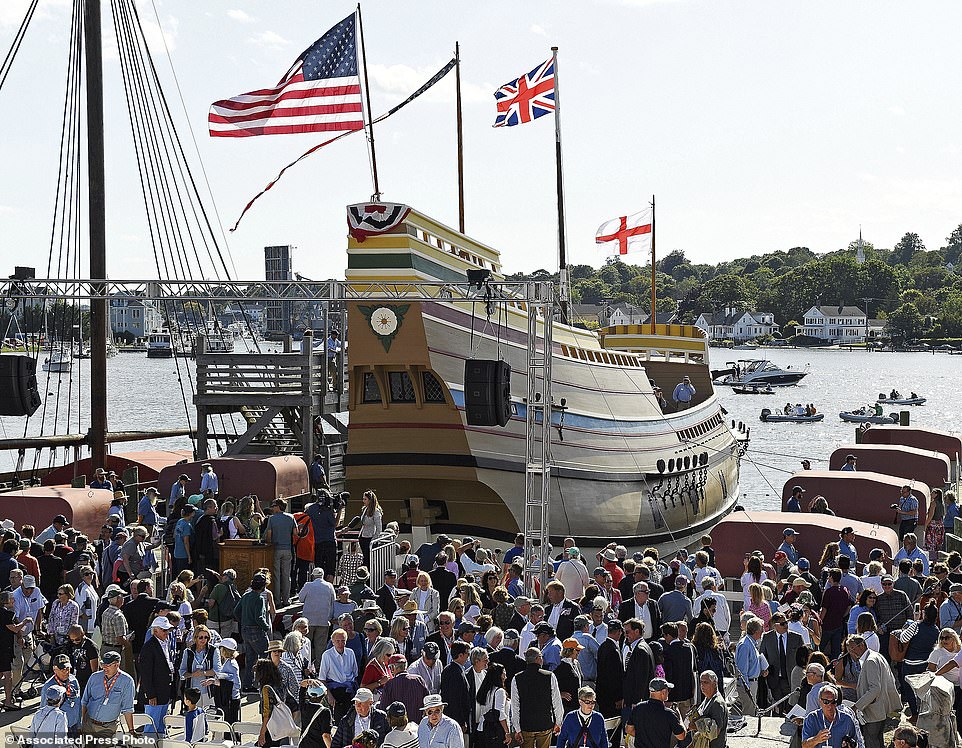
The Mayflower, the iconic ship that carried the Pilgrims to the New World in 1620, has long held a prominent place in American history. Its voyage marked a significant moment in the establishment of what would become the United States. However, recent discussions have emerged regarding the ship’s current status—more specifically, whether the Mayflower has been “shut down” in some way. To clarify this matter, we need to explore both the historical significance of the Mayflower and the recent developments affecting its legacy.
Historical Significance of the Mayflower
The Mayflower’s journey from Plymouth, England, to the New World is a cornerstone of American folklore. It carried 102 passengers, a mix of Pilgrims seeking religious freedom and other settlers. Their arrival in what is now Massachusetts, and the subsequent establishment of Plymouth Colony, is celebrated as a foundational moment in American history. The Pilgrims’ story has been memorialized in countless ways, including the annual Thanksgiving holiday, which commemorates their early harvest and the feast shared with Native Americans.
The original Mayflower was a cargo ship, and after completing its historic voyage, it continued to serve as a merchant vessel until it was eventually dismantled. As such, the physical ship has long since ceased to exist. However, its legacy lives on through historical records, replicas, and educational programs.
The Mayflower Replica and Recent Developments
In recent years, attention has turned to the replicas of the Mayflower, which serve as both historical artifacts and educational tools. The most notable replica, the Mayflower II, was built in 1957 in England and sailed to Plymouth, Massachusetts, to commemorate the 350th anniversary of the Pilgrims’ landing. This replica has since become a centerpiece of historical tourism, drawing thousands of visitors each year to see a tangible link to the past.
The Mayflower II underwent extensive restorations over the years, including a major project completed in 2019. This restoration aimed to preserve the vessel for future generations, ensuring that it remains a valuable educational resource. Despite the challenges of maintaining such a historical artifact, the Mayflower II continues to be a symbol of the Pilgrims’ journey and their enduring legacy.
The Status of the Mayflower II: Was It Shut Down?
The term “shut down” might refer to various scenarios, from operational pauses to permanent closure. In the context of the Mayflower II, recent developments have indeed led to temporary operational pauses, but there is no indication of a permanent shutdown.
In 2021, the Mayflower II faced a significant setback when it was discovered that it had sustained damage to its hull, which required urgent repairs. This situation led to the ship being taken out of service for a period while it underwent necessary restoration work. The repairs were part of a larger effort to ensure the vessel’s structural integrity and continued preservation.
The restoration project was part of an ongoing commitment to maintaining the Mayflower II as a historical and educational resource. The ship’s temporary absence from public view was a necessary measure to address the damage and ensure that it remains safe and functional for future generations.
The Future of the Mayflower Legacy
The Mayflower II’s temporary shutdown for repairs does not signify the end of its role in American history. Rather, it reflects the ongoing efforts to preserve and protect historical artifacts. The restoration work ensures that the replica can continue to educate and inspire visitors about the Pilgrims’ voyage and early American history.
Moreover, the Mayflower’s legacy extends beyond the physical ship. The story of the Pilgrims and their journey has become a vital part of American cultural heritage. Educational programs, museums, and historical sites continue to share their story, ensuring that the significance of the Mayflower endures.
The future of the Mayflower II is promising, with plans for continued restoration and maintenance. It is expected to return to its role as a living history exhibit, offering visitors a unique and immersive experience into the past. Additionally, the educational value of the replica is supported by various historical and cultural institutions dedicated to preserving and interpreting American history.
Conclusion
In summary, the Mayflower, as a historical ship, has not been shut down in any permanent sense. While the Mayflower II, the notable replica, has faced temporary closures for essential repairs, these actions are part of a broader effort to preserve and maintain its historical significance. The story of the Mayflower remains a cornerstone of American heritage, and the ongoing work to preserve its replicas ensures that future generations will continue to learn from and be inspired by this remarkable chapter of history.







